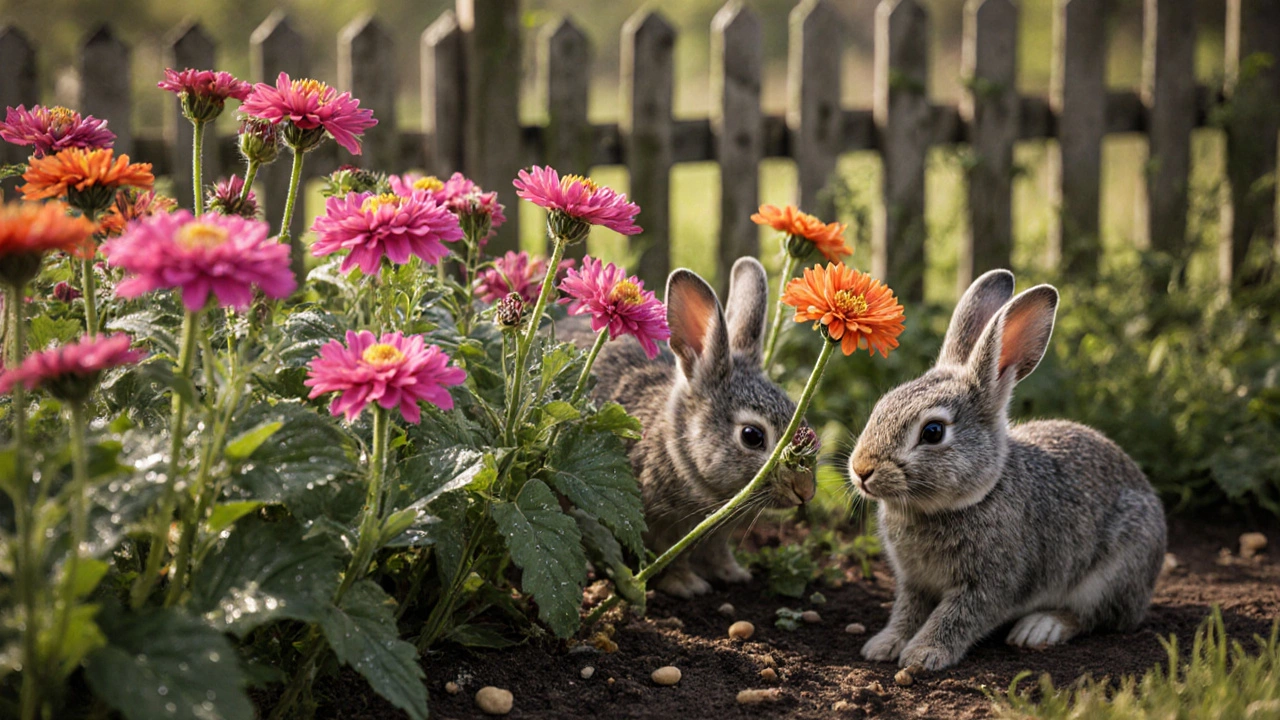Rabbits do eat zinnias, especially in spring and fall. Learn how to protect your kitchen garden flowers with simple, effective strategies - from cages to companion planting - without using harsh chemicals.
Rabbit Damage in Garden: How to Protect Your Plants and Stop Bunnies from Eating Your Crop
When you see your young seedlings chewed to the ground, your lettuce gone, or your roses stripped bare, it’s not always slugs or insects—it could be rabbit damage in garden, the destructive feeding behavior of wild or domestic rabbits that targets tender plants, especially in early spring and fall. Also known as bunny damage, it’s one of the most frustrating problems for home gardeners in India, where rabbits thrive in urban edges, rural fields, and even balcony gardens near green spaces. These animals don’t just nibble—they clear-cut entire patches in a single night, and they’re not picky. Vegetables, herbs, flowers, and even young fruit trees are all on the menu.
Rabbits are drawn to gardens because they offer easy, nutrient-rich food. They prefer plants with soft leaves like lettuce, spinach, kale, and young broccoli. But they’ll also eat marigolds, tulips, and even the bark of young fruit trees in winter when other food is scarce. What makes it worse is that rabbits are most active at dawn and dusk, so you might not even see them in action. Their signs? Clean, angled bites at a 45-degree angle, small round droppings near damaged plants, and tiny footprints in soft soil. Unlike deer, rabbits don’t tear or rip—they cut cleanly, which is why gardeners often mistake the damage for a tool or pruning error.
Protecting your garden doesn’t mean trapping or poisoning. It means working smarter. A physical barrier like chicken wire fencing, buried 6 inches deep to stop digging, works wonders. For balcony gardens, use mesh netting over pots or grow plants in elevated planters rabbits can’t reach. Natural repellents like garlic spray, egg wash, or predator urine (available at garden stores) can help, but they need reapplying after rain. Planting rabbit-resistant species like marigolds, lavender, rosemary, or onions around your vulnerable crops acts as a living fence. And don’t forget: keeping your garden tidy—removing tall grass, brush piles, and clutter—makes it less inviting for rabbits to hide and nest.
Some gardeners swear by motion-activated sprinklers or reflective tape, and while these can startle rabbits, they often get used to them fast. The real solution is consistency. Combine methods: fence the perimeter, sprinkle repellent every 10 days, and plant a buffer of unappetizing greens around your prize crops. Rabbits are smart, but they’re also lazy—they’ll move on if the next garden is easier.
Below, you’ll find real-tested advice from Indian gardeners who’ve faced this exact problem. From DIY repellents made with kitchen scraps to how to secure your terrace garden against rabbits, these posts give you the exact steps that work—not guesswork. Whether you’re growing tomatoes on your balcony or raising vegetables in your backyard, you’ll find solutions that fit your space, your budget, and your local climate.
